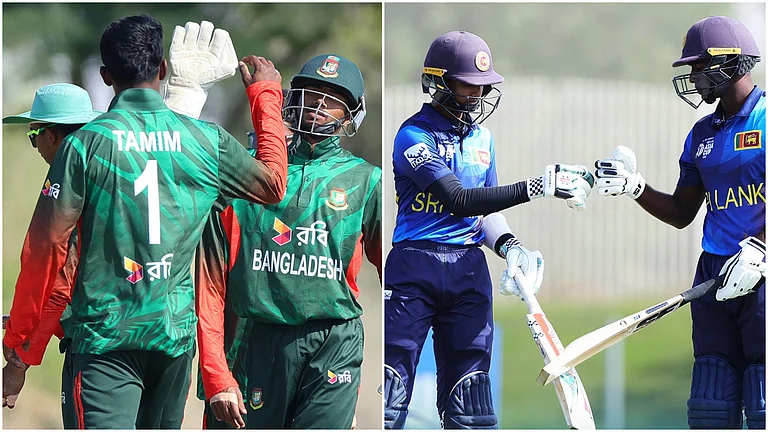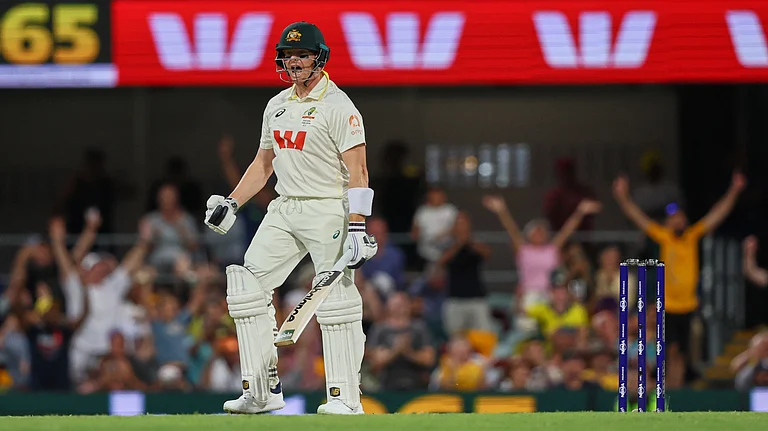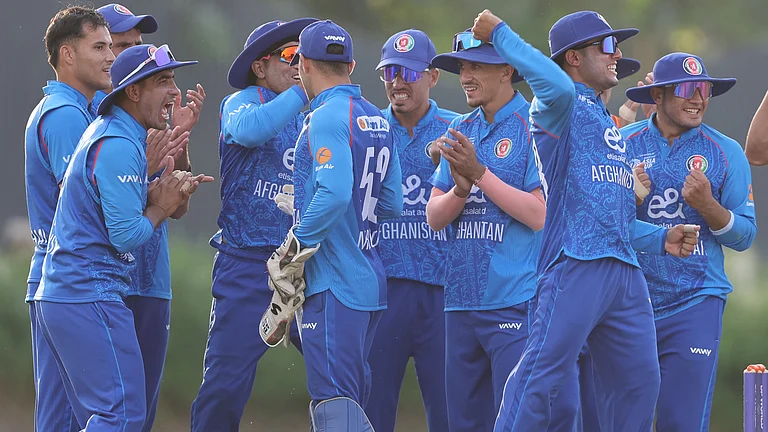No chest-thumping. None of those usual markers of joy that accompany martial anniversaries, nor even solemnity dressed up in ostentatious ways. That’s not a very big surprise. This is, after all, a date that marks a year of the violent face-off between the Indian Army and the PLA in Galwan Valley. The conflict had left 20 Indian soldiers, including their commanding officer Colonel Santosh Babu, dead. Not a happy memory. And not one that can be milked like the Pulwama tragedy either. So the Narendra Modi government will busy itself with managing the second wave of Covid; there are no plans to commemorate the bloody battle at the higher levels. The Bihar Regiment, to which most of the soldiers belonged, is likely to mark the day with a sedate memoriam service. Do not expect any display of muscular nationalism that’s generally associated with themes revolving around Pakistan, Kashmir or Pakistan-sponsored terrorism—the kind that marks the anniversary of the 2016 surgical strikes across the Line of Control (LoC), or to a lesser extent, the 2019 Balakot air raids.
ALSO READ: Infernal Affairs
Despite a deep-rooted psychological animus, China has never been part of a very official political propagation by the BJP government—the mainstream rhetoric over national security is still overwhelmingly skewed towards Pakistan. The BJP did try to introduce China into the vocabulary of public campaigning before the Bihar assembly elections that took place barely months after the Galwan clash. Prime Minister Modi had invoked the bravery of the martyred soldiers from the Bihar Regiment as he campaigned in the state in October 2020. “Sons of Bihar lost their lives in Galwan valley for the tricolour and ensured Bharat mata’s head is held high. Jawans of Bihar were also martyred in the Pulwama attack. I bow my head at their feet and pay respects,” he said during one of the election rallies.
ALSO READ: Checkmate & Stalemate
But there’s a vital difference between the two incidents. The terror attack on the CRPF convoy in Pulwama on February 14, 2019, was more lethal in terms of the body count, resulting in the death of 46 CRPF personnel. And 12 days later—and just two months before the 2019 general elections—Indian warplanes crossed the border to launch a pre-emptive strike on terrorist training camps at Balakot. Thereafter, the BJP government tom-tommed its dramatic derring-do loud enough to drown out the noise of India’s economic train grinding to a near-halt in the run-up to the elections, and to shift the focus to its muscular credentials. Though the Balakot air-raids subsequently did not fall into the same league as the 2016 surgical strikes, owing to the ambivalence of their success, they served the BJP well in terms of political mileage.
ALSO READ: Plateau Of Bad Faith
The surgical strikes across the LoC had earlier provided a fillip to the BJP’s campaign for the Uttar Pradesh assembly elections in 2017 as posters depicting Modi as Lord Ram defeating Nawaz Sharif as Ravana came up all over the state. The strikes also spawned some handy popular culture, including a Bollywood movie that was released just before the 2019 general elections, not to speak of the BJP campaign revolving around the ‘Main bhi chowkidar’ meme, underlining the role of Modi in safeguarding the country’s interests.
ALSO READ: ‘This Apathy Breaks My Heart’
Partly owing to the asymmetry in power, and partly because of the more complex nature of the bilateral relationship, China-related issues of national security have not been accorded the same centrality by the BJP—it has raised the bogey only tangentially during elections, keeping the bluster in check. While Galwan found a mention only during Bihar, the stand-off at Doklam in June 2017 was used by Modi to corner Congress leader Rahul Gandhi during the Gujarat elections later that year. He said that while the Congress had raised questions about the Uri surgical strike, Rahul had met and hugged the Chinese ambassador even as Indian soldiers stood eyeball-to-eyeball against PLA soldiers in Doklam. So where there’s a chance, it has not been above exploiting the theme. But chances of grandstanding are not exactly in abundance when it comes to China—and that it’s a country with which Modi has been at pains to forge a relationship, even making five visits, adds to the embarrassment when things take on a menacing military aspect. But it helps that, in the popular mind, a lesser degree of familiarity means China does not have the same resonance as Pakistan has. Over the past few years, the BJP would have found it more convenient to keep things that way.

And yet, a few occasions come by. Before the 2018 Karnataka elections, Modi found another way of targeting the Congress. This time the criticism was reserved for late Prime Minister Jawaharlal Nehru. He spoke about how his troops had stood up to China at Doklam, and mentioned how Nehru was believed to have humiliated General K.S. Thimayya, a brilliant and brave son of Karnataka. If this was chess, you could say the BJP plays white here, with a natural advantage. “National security is a foolproof electoral strategy for us,” explains a BJP office-bearer. “It gives us a chance to project the government as bold, strong and decisive, and it also helps to corner the Congress and other opposition parties. The more they question the government on issues like the surgical strike, Balakot or even the stand-off with the Chinese, the easier it gets for the government to call them out as anti-national. The opposition has to tread very carefully on these sensitive issues.”
ALSO READ: ‘We’re Proud Of The Bihar Regiment’
Congress leader Manish Tewari finds it “morally reprehensible” the way the ruling dispensation uses “national security as a political prop”. He says the government has handled the entire Chinese situation in the most opaque manner. “It has stonewalled all attempts to have any discussion over China,” he rues, contrasting it with the 1962 Chinese aggression. Tewari talks about how A.B. Vajpayee, as a young Jan Sangh leader, had questioned Nehru about the aggression, and how the government of the day had responded. “Debates were held in Parliament while the conflict was still on,” adds the Congress leader. He says behind its bluster, the government took its eyes off the geopolitical ball in a way detrimental to national security.
ALSO READ: Beard The Lion To Bell The Cat
Sangh ideologue Seshadri Chari, an expert in strategic affairs, agrees India is on the backfoot as regards to China, and enunciates the reasons why it cannot be used for political mileage like Pakistan. “As an egotistic nationalist, I don’t like to say this, but there exists an asymmetry with China that’s not there with Pakistan. That kind of asymmetry exists for Pakistan in relation to India,” he tells Outlook. According to him, political leaders can claim “we have given them a run for their money or taught them a lesson for public consumption”, but the fact remains that the disengagement with China following Galwan is far from over. Though India has stopped the Chinese advance in most places, the conflict remains inconclusive. “If we were on the winning side, the government would have definitely been using the conflict with China too for political mileage,” Chari says.
ALSO READ: Sharp Edge Of Realpolitik
The flip side to the argument is that, since China has never been part of the public imagination, the political fallout is also limited for Modi and the BJP. Also, the conflict being inconclusive means it can’t be painted as a victory for China. According to Chari, Chinese President Xi Jinping is under more pressure than Modi due to the constraints of his domestic politics. “The Communist Party of China has completed 100 years. The Chinese government is facing a global backlash and scrutiny over the Wuhan virus. If China withdraws from all the friction points, it will go against Jinping’s posturing and image-building,” he explains. Another reason for China’s apprehensions, according to Chari, is the Quad or the Quadrilateral Security Dialogue of which India is a part along with the US, Australia and Japan. China views it as a mechanism to contain its global rise and counters it with attempts to assert power wherever it can, he says. The footnotes to that were written in Galwan a year ago, and the BJP’s strategy for now rests on the reassuring idea that the print is too fine for the Indian voting public to read.
ALSO READ


























